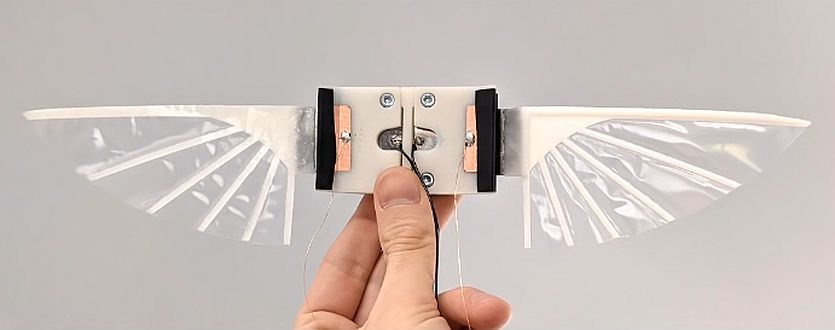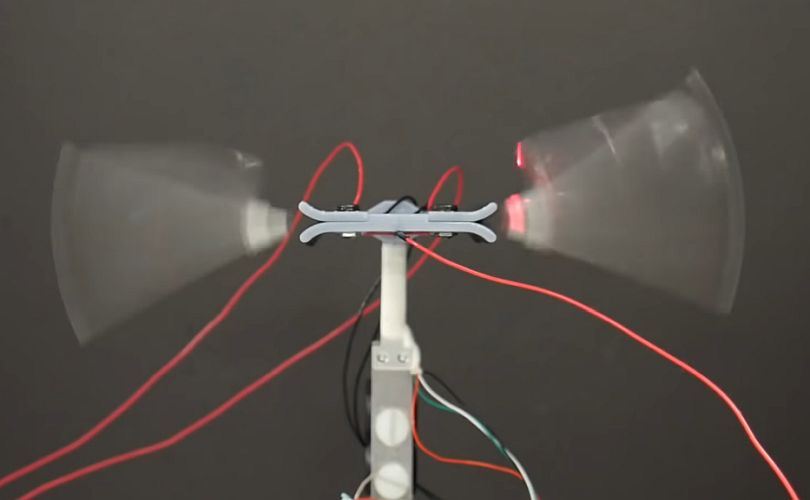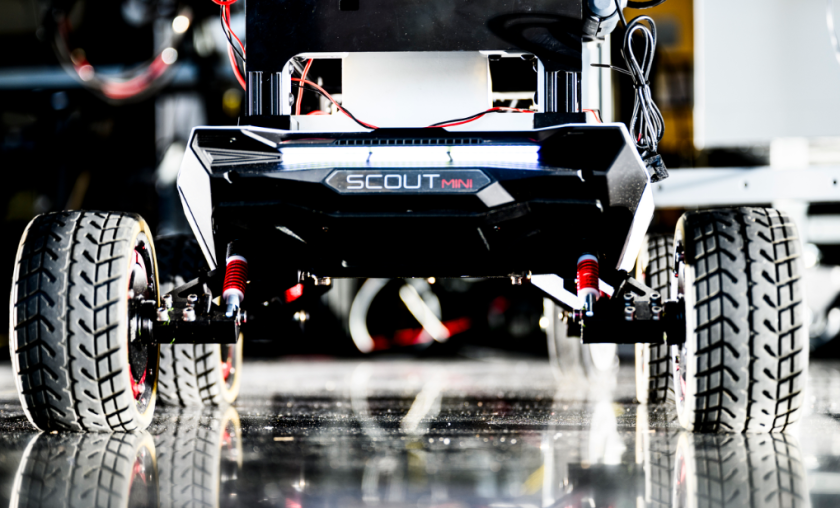
Researchers at the University of Bristol, U.K. have fabricated a flapping-wing microrobot that can produce more power than a similar-sized insect. The micro-air vehicle is a product of biomimicry, inspired from bees and other flying insects.
The team has employed electromechanical zipping for flapping wings, thus bypassing conventional motors and gears.
Until now flying robots are based on propeller-based designs simply because replicating the naturally based flying mechanism has always been very challenging.
Direct-drive artificial muscle system
In their press release, researchers explained that motors, gears, and complex transmission systems not only lead to the complexity in operational design but it also adds to the weight of the entire micro machine. This of course has many other undesired effects.
Led by Jonathan Rossiter, the team of researchers successfully demonstrated the flapping wing motion with the help of direct-drive artificial muscle system. The new flapping-wing microrobots do not use using rotating parts or gears.
LAZA system
The mechanism consists of an electrode dipped in a liquid dielectric. In here, the process is called LAZA system, that is, Liquid-amplified Zipping Actuator (LAZA). The up and down flapping movement of the wings is performed by activating electric fields above and below it with the help of oppositely charged electrodes.
To optimise the directional thrust that is produced by the flapping motion, researchers added the passively pitching wings.
Dr. Tim Helps, one of the developers said that with the help of LAZA system, they were able to generate electrostatic forces directly on the wing. Hence, the new system by passed complex and transmission system. Thus, they were able to bring about better performance with simple design.
Flying speed more than an actual insect
To demonstrate the efficiency of the new system of flying robots to long-haul flights, the scientists tested the flying mechanism for over one million flapping cycles. The result showed flying speed of the micro air vehicle of about 0.71 meters per second.
The demonstration also established that the prototype produced more power than its counterpart present in the natural habitat.

Takeaway
LAZA system is an important step towards autonomous flying robots. Although there already exists small flying devices but with LAZA, the development might take a giant leap. Flapping micro air vehicle is light and more efficient that the traditional counterpart.
Researchers envision the lightweight flapping micro-air vehicles has future applications, like autonomous inspection in areas which are otherwise not safe or unapproachable for human intervention.
Micro-air vehicles will also assist in performing typical tasks like plant pollination and in rescue missions such as finding people sunk in catastrophic debris and collapsed buildings.



